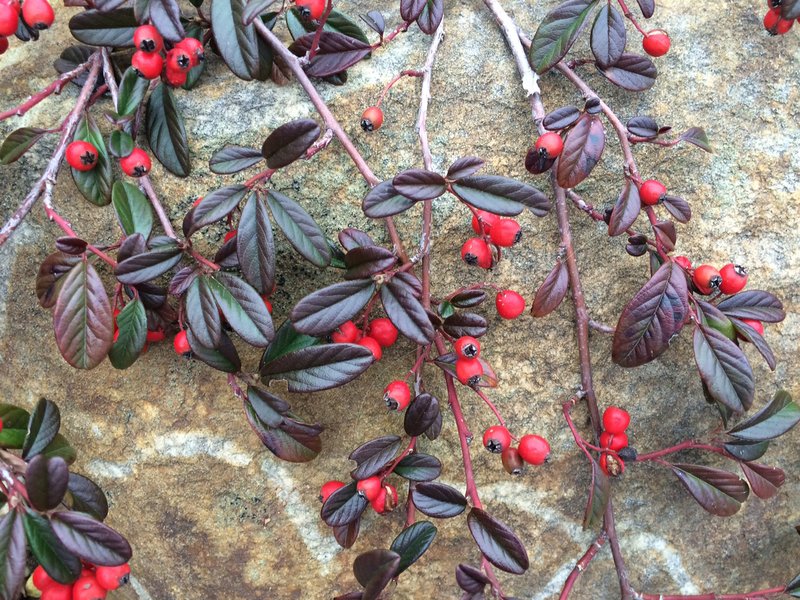You might see the first day of spring as the moment the magnolia blossoms open amid a newly arrived field of crocuses, but our garden plants take a different view. For them, spring isn't a season but the confluence of phenomena that trigger growth.
Some of the responses have little to do with spring — the daffodil has been growing roots since September, the grape hyacinth of early April sprouted its leaves six months before, the plump terminal bud of the rhododendron has been ages in the making.
Buds break into growth based on whether the parent shrub or tree has received enough of its winter chilling hours along with sufficiently higher temperatures. Because the chilling needs differ by species, spring is a progression of awakenings over several weeks. Already, some plants have met this threshold and, with mild weather, are doing their thing.

So what may look like the depth of winter is actually a moment that is fast slipping from our grasp. For those of us who like winter as a period of rest and stillness, I offer this advice: Put down the garden fork for a while, stow the wheelbarrow and just wander about the garden to perceive those precious February moments.
The landscape skews either very large or small in winter. On the macro level, you can see the grand silhouettes of distant old trees, especially when their tracery is revealed before the season's pale yellow skies. At the other end of the scale, you strain to discern the lengthening of the emerging bulbs one day to the next.
Missing is the great middle ground of the garden, the human-scale spaces that are filled after May with small shrubs, ferns, perennials and grasses. Those beds look deceptively lifeless. Incidentally, this is the only time you should see large areas of mulch, preferably chopped leaves. By early spring, the leaves will be half-rotted and ready to be scratched into perennial beds or dug under annual or vegetable beds before planting. Between mid-May and Halloween, these spaces should be filled with plants. If they're not, consider more perennials, ground covers, zinnias, lilies, salvias, dahlias — whatever will work in these voids. Late winter is the perfect period to think about what you might plant this spring while you take in the winter garden.

Having fully surveyed my own garden for its hibernal highlights, I dropped by Green Spring Gardens near Alexandria, Va., knowing that I would find, at the least, some interesting witch hazels in bloom.
One of the showiest is an intermediate variety named Harry, a big shrub with big flowers: The orange-yellow, threadlike petals are at least an inch long, and the established plant here is 10 feet tall and 15 feet across. This may be too big for a small garden, but a real asset if you have the space. If you don't have the space, you might consider the winsome Luna, which occupies a smaller corner and seems more compact and densely flowered.
In the rock garden, where the heath variety Kramer's Red is in full red-purple flower, subtler beauty could be found in the way the red-fruited cotoneaster Scarlet Leader veils a stone with its glossy attractive leaves, green in summer but now a red purple. Cotoneaster is a tricky shrub to grow, so finding a healthy variety has added value. Clearly, the attention to good drainage is key to survivability.
Elsewhere, I found a priceless winter vignette: a colony of giant snowdrops at the flared base of an old, white-speckled sycamore tree. The tree connotes great age but, less obviously, a drift of snowdrops can represent decades of quiet, expansive self-seeding.

The mildness of this mid- Atlantic winter and absence of snow have made it a banner year for snowdrops here. Their precociousness and sheer delicacy grow on you, and while I have yet to come down with the fever for pricey cultivars (a malady known as galanthomania), there's still time. I prefer spending $100 on expanding a drift of snowdrops rather than on one or two novel cultivars with yellow markings.
You may read that snowdrops should be planted, or moved, only "in the green," that is, after flowering but while still in leaf and root. I've found if you order bulbs early in the fall and get them in the ground as soon as they arrive, they don't miss a beat.
In another part of Green Spring, clumps of giant snowdrop are so long flowering this winter at the base of conifers (I can't tell if they're bald cypress or dawn redwoods) that some of them are beginning their natural decline.
Descend to the woodland stream in this park and you see more of the native hardwood topography of winter, where river birches lean out and the understory of shrubs is reduced to a haze of twigs above a coffee-colored sea of fallen leaves. The American beech tree is a beacon of bright, smooth gray column, but here, as in every urban park, each tree is marred by lovers with their knives. One tree is so defaced by declarations of affection that it looks like a sailor who has had too much shore leave. Hal Loves Nancy, we are told. Hal doesn't love trees; this one must bear his gesture for the rest of its long life. One can only hope that Nancy came to her senses and ran off with a tree-hugger.
HomeStyle on 02/23/2019
